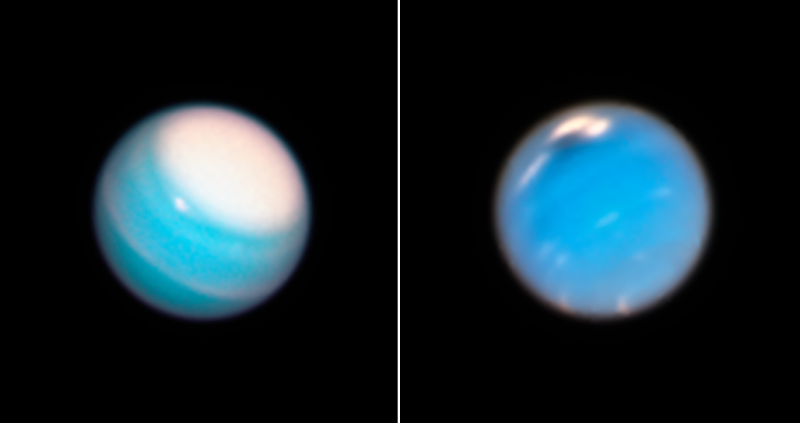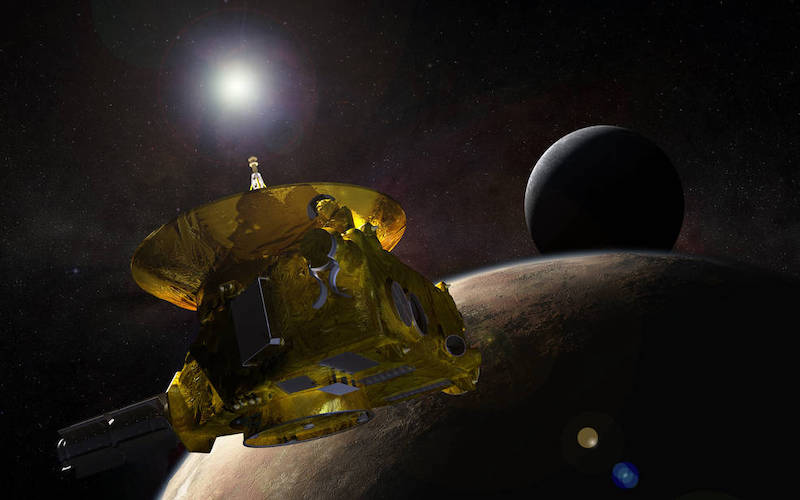
Are you an amateur astronomer? Would you like to help NASA with one of its deep space missions? Well now’s your chance! The New Horizons spacecraft is now in the outer fringes of the solar system, much farther than Pluto. But in September, it will look back to observe the two ice giants, Uranus and Neptune. The Hubble Space Telescope will help out, too. And as NASA announced earlier this month, you can observe these distant worlds at the same time and share your images with the mission team and on social media.
Looking back at the ice giants
New Horizons is in the Kuiper Belt, more than five billion miles (eight billion km) from Earth. That is even farther away than Pluto, which the spacecraft flew past and studied in 2015. From that vantage point, New Horizons will look back toward the solar system. For these observations, all eyes will be on Uranus and Neptune. Mission scientists say that by looking at them “from behind,” New Horizons can observe them in a way that we never can on Earth. The images and other data will provide new insight into the atmospheres of the two giant worlds. And indeed they are two different and unique worlds, despite looking superficially similar.
The observations will help provide new details about both the planets’ atmospheres themselves and how heat is transferred from the their cores to the deep atmospheres that envelope those cores.

Amateur astronomers needed
New Horizons and Hubble will be able to study a lot of details in the planets’ atmospheres. But NASA also wants help from amateur astronomers. They can supplement the observations in ways that New Horizons and Hubble cannot do.
Alan Stern is the New Horizons principal investigator from the Southwest Research Institute (SwRI) in Boulder, Colorado. He stated:
By combining the information New Horizons collects in space with data from telescopes on Earth, we can supplement and even strengthen our models to uncover the mysteries swirling in the atmospheres of Uranus and Neptune. Even from amateur astronomer telescopes as small as 16 inches, these complementary observations can be extremely important.
In particular, the astronomers can help track bright features in the planets’ atmospheres. And they can do that for longer periods of time.
Later, you can post your images on X (formerly Twitter) and Facebook. You can include details such as time and date and what filter passbands you used. Be sure to include the hashtag #NHIceGiants in your posts. That way, the New Horizons mission team can collect the images as part of the campaign.

More information available soon
NASA says that additional details about the campaign will be posted soon, including website URL, finder charts and observation tables.
As for New Horizons and Hubble, those images will be publicly available later this year. The Hubble images will be posted in late September on the Mikulski Archive for Space Telescopes (MAST) website. The New Horizons images will be published separately by the end of 2023.
Previous images from Hubble in 2019 showed bright and dark storms on both planets. And in a new study of images from the past 30 years from Hubble and the W.M. Keck Observatory, scientists have found that Neptune’s clouds have almost completely disappeared. They are expected to reappear over the next few years, however. It will be interesting to see what New Horizons and Hubble see next month!
Bottom line: NASA’s New Horizons spacecraft and Hubble Space Telescope will turn their eyes to the ice giants – Uranus and Neptune – in September. And NASA wants your help!
Read more: Why Neptune and Uranus are different
Read more: New Hubble images show storms on Uranus and Neptune











